Will-o’-the-wisp: Eerie Lights Over Swamps And Marshes That Frightened And Led People Astray
A. Sutherland - AncientPages.com - Little is known about the nature of will-o'-the-wisp. They appear as bright spots, small lights floating above the surface, dancing at night over swamps, peat bogs, and wetlands.
Old advice says: Don't follow the light of these fires in the marshlands because they will deceive you.
In myths and legends of many cultures, will-o'-the-wisp has been associated with the realm of the supernatural and the world of spirits (in Latin: 'ignis fatuus' ( foolish fire), English: 'will-o'-the-wisp'; in Swedish: 'irrbloss.')
Poets refer to them as "a flame of hate wandering through a swamp, leading nowhere."
The spooky 'will-o'-the-wisp' sometimes looks like a teardrop-shaped orb in blue, white, red, or yellow color but usually resembles a lantern or flickering small torch. Based on various accounts, the size of this phenomenon can be as big as a basketball.
The light is really spooky because it seems to play with humans; it may suddenly disappear and appear again. If you walk trying to come closer to it, it moves away from you, winks out, or seems to follow you.
In Slavic beliefs (depending on the region), these lights were referred to as 'firebirds,' 'swamp fireflies,' and 'swigs' and had their respective name in different languages. Stories about these elusive lights have been retold in various forms across Ireland, England, Wales, and Scotland.
 An 1882 oil painting of a will-o'-the-wisp by Arnold Böcklin (1827–1901). Public Domain
An 1882 oil painting of a will-o'-the-wisp by Arnold Böcklin (1827–1901). Public Domain
In the past, there was no scientific explanation for these eerie lights, and frightened people desperately tried to find answers to the phenomenon.
Were they perhaps souls of wicked people, who became restless, full of regret, and did not have peace after death, or those who performed as much evil as good in life and, therefore, could neither go to heaven nor hell? Or perhaps they were ancient nature spirits, the souls of the night elves.
Another view was that they would be people deceived to descend into bogs and then, after their death, became will-o'-the-wisp, forever dancing around the place where they died, leading other lost people either to safety or to their death. The traveler, delighted at the sight of the light flaming in the distance, tried to move closer towards it, often mistaking it for another traveler.
Before he knew it, he fell into a hole, got suddenly stuck in the mud, or dropped off a cliff to the great delight of will-o'-the-wisp - the deceiver.
Still, other voices speak of the animal as a distinct species: a one-legged glowing blue-light figure. The creature's specific feature is invisibility. It inhabits vast swathes of England covered in swamps and marshes that are difficult to avoid or pass by, especially at night.
Will-o'-the-wisp - A Sylham Lamp
They were usually considered unfriendly to humans and could lead passing travelers astray, particularly into elusive bogs and marshes with no return. One belief was they were associated with rich deposits of ore or other treasures hidden in the ground, and in this case, they would be lights from the dwarves' lanterns.
 Fireflies in the forest near Nuremberg (exposure time 30s). source
Fireflies in the forest near Nuremberg (exposure time 30s). source
The flickering lights, associated with panic, terror, and death, lured treasure hunters and wandering, exhausted, and lonely people.
Yet another ancient belief was that 'will-o'-the-wisp' himself seeks his way home, dancing in the dark, night after night - in vain. This fire is cold; therefore, it will never shine long enough to warm itself, but unfortunately, it is long enough that you will not find your way home.
John Brand writes that the elusive 'Will-o'-the-wisp' is also called a Sylham Lamp.
In the low grounds at Sylham, just by Wingfield in Suffolk, he writes, are the Ignes Fatui, commonly called "Sylham Lamps," the terror and destruction of travelers and even of the inhabitants, who are frequently misled by them." 1
Today we believe we have an explanation for this phenomenon, which represents false fires that may be self-ignited methane and related to the spontaneous combustion of gases from rotting plant and animal remains or to bioluminescence in insects known as fireflies (or lightning bugs).
It seems, however, this has not been proven yet.
Written by – A. Sutherland - AncientPages.com Senior Staff Writer
Updated on December 12, 2022
Copyright © AncientPages.com All rights reserved. This material may not be published, broadcast, rewritten or redistributed in whole or part without the express written permission of AncientPages.com
Expand for referencesReferences:
- Brand J. Observations on Popular Antiquities Chiefly Illustrating the Origin ... Volym 2
Biren B. A Dictionary of Superstitions and Mythology
More From Ancient Pages
-
 Oldest Canoe Ever Discovered In Maine – It Dates To 1280-1380 A.D
Archaeology | Jun 13, 2019
Oldest Canoe Ever Discovered In Maine – It Dates To 1280-1380 A.D
Archaeology | Jun 13, 2019 -
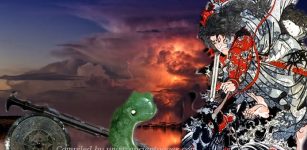 Susanoo-no-Mikoto – Shinto God Of The Sea And Storms Was Banished From Heaven
Featured Stories | Nov 23, 2018
Susanoo-no-Mikoto – Shinto God Of The Sea And Storms Was Banished From Heaven
Featured Stories | Nov 23, 2018 -
 Hollow Bones That Let Dinosaurs Become Giants Evolved At Least Three Times Independently
News | Apr 11, 2023
Hollow Bones That Let Dinosaurs Become Giants Evolved At Least Three Times Independently
News | Apr 11, 2023 -
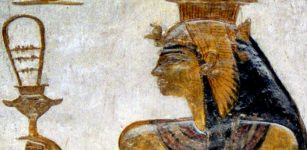 Sistrum: A Magical, Sacred Ancient Egyptian Musical Object
Civilizations | Dec 31, 2014
Sistrum: A Magical, Sacred Ancient Egyptian Musical Object
Civilizations | Dec 31, 2014 -
 Vikings Had Dark Humor And Joked Even During Deadly Battles
Featured Stories | Nov 10, 2016
Vikings Had Dark Humor And Joked Even During Deadly Battles
Featured Stories | Nov 10, 2016 -
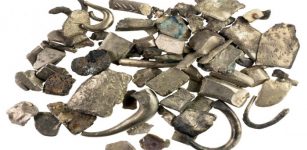 Hacksilber Hoard Dated To 11th Century BC: Eastern Mediterranean Silver Trade Reconstructed
Archaeology | Jul 5, 2021
Hacksilber Hoard Dated To 11th Century BC: Eastern Mediterranean Silver Trade Reconstructed
Archaeology | Jul 5, 2021 -
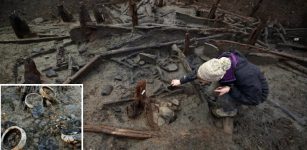 Mystery Of The British Pompeii Deepens – Bronze Age Settlement Destroyed By Dramatic Fire
Archaeology | Jun 23, 2019
Mystery Of The British Pompeii Deepens – Bronze Age Settlement Destroyed By Dramatic Fire
Archaeology | Jun 23, 2019 -
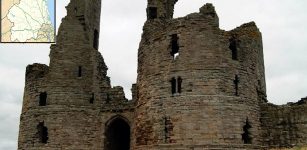 Dunstanburgh Castle: Underground Passageways And The Legend Of Sir Guy The Seeker
Featured Stories | Apr 5, 2016
Dunstanburgh Castle: Underground Passageways And The Legend Of Sir Guy The Seeker
Featured Stories | Apr 5, 2016 -
 Mediterranean Migration Was Low Over 8,000 Years – New Study
Archaeology | Mar 3, 2021
Mediterranean Migration Was Low Over 8,000 Years – New Study
Archaeology | Mar 3, 2021 -
 Intriguing Ket People – The Last Nomadic Hunter-Gatherers Of Siberia
Featured Stories | Nov 23, 2023
Intriguing Ket People – The Last Nomadic Hunter-Gatherers Of Siberia
Featured Stories | Nov 23, 2023 -
 100,000-Year-Old Case Of Deafness Discovered In Fossilized Skull Of Hunter-Gatherer
Archaeology | Jul 21, 2022
100,000-Year-Old Case Of Deafness Discovered In Fossilized Skull Of Hunter-Gatherer
Archaeology | Jul 21, 2022 -
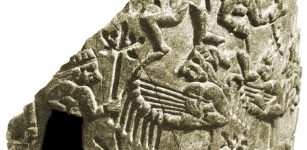 Lugal-Anne-Mundu: ‘King Of The Universe’ And Powerful Leader Who Restored Sumer To Its Former Glory
Civilizations | Oct 1, 2016
Lugal-Anne-Mundu: ‘King Of The Universe’ And Powerful Leader Who Restored Sumer To Its Former Glory
Civilizations | Oct 1, 2016 -
 Nue – Mysterious Mythological Shape-Shifting Creature Transforming Into A Black Cloud
Featured Stories | Jun 12, 2020
Nue – Mysterious Mythological Shape-Shifting Creature Transforming Into A Black Cloud
Featured Stories | Jun 12, 2020 -
 On This Day In History: Battle Of Lagos Took Place Between Royal Navy Of Britain and France – On August 19, 1759
News | Aug 19, 2016
On This Day In History: Battle Of Lagos Took Place Between Royal Navy Of Britain and France – On August 19, 1759
News | Aug 19, 2016 -
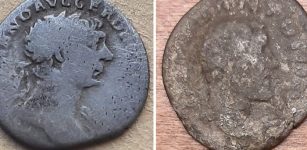 Unique Discovery – 2,000-Year-Old Roman Coins Found On Gotska Sandön In Sweden
Archaeology | Apr 13, 2023
Unique Discovery – 2,000-Year-Old Roman Coins Found On Gotska Sandön In Sweden
Archaeology | Apr 13, 2023 -
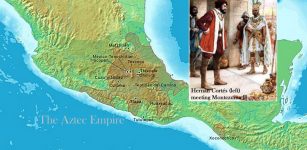 Aztec Empire: ‘Tlatoani’ – The Ruler With The Ultimate Power In The Land
Ancient History Facts | May 5, 2016
Aztec Empire: ‘Tlatoani’ – The Ruler With The Ultimate Power In The Land
Ancient History Facts | May 5, 2016 -
 Almost 3,000 Year-Old Burial Site Of Urartian Royals Discovered In Turkey’s Famous Van
Archaeology | Jul 31, 2019
Almost 3,000 Year-Old Burial Site Of Urartian Royals Discovered In Turkey’s Famous Van
Archaeology | Jul 31, 2019 -
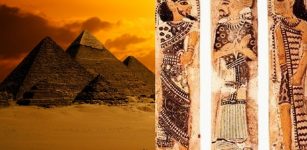 Mysterious Hyksos People Rose To Power In Ancient Egypt Through Marriage And Not Invasion – Researchers Say
Archaeology | Apr 17, 2019
Mysterious Hyksos People Rose To Power In Ancient Egypt Through Marriage And Not Invasion – Researchers Say
Archaeology | Apr 17, 2019 -
 Mystery Of Doppelgangers And Spirit Doubles – From Ancient To Modern Times
Featured Stories | Sep 16, 2014
Mystery Of Doppelgangers And Spirit Doubles – From Ancient To Modern Times
Featured Stories | Sep 16, 2014 -
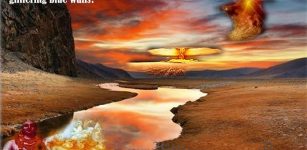 Physical Evidence Of Ancient Atomic Wars Can Be Found World-Wide
Civilizations | Oct 6, 2015
Physical Evidence Of Ancient Atomic Wars Can Be Found World-Wide
Civilizations | Oct 6, 2015

